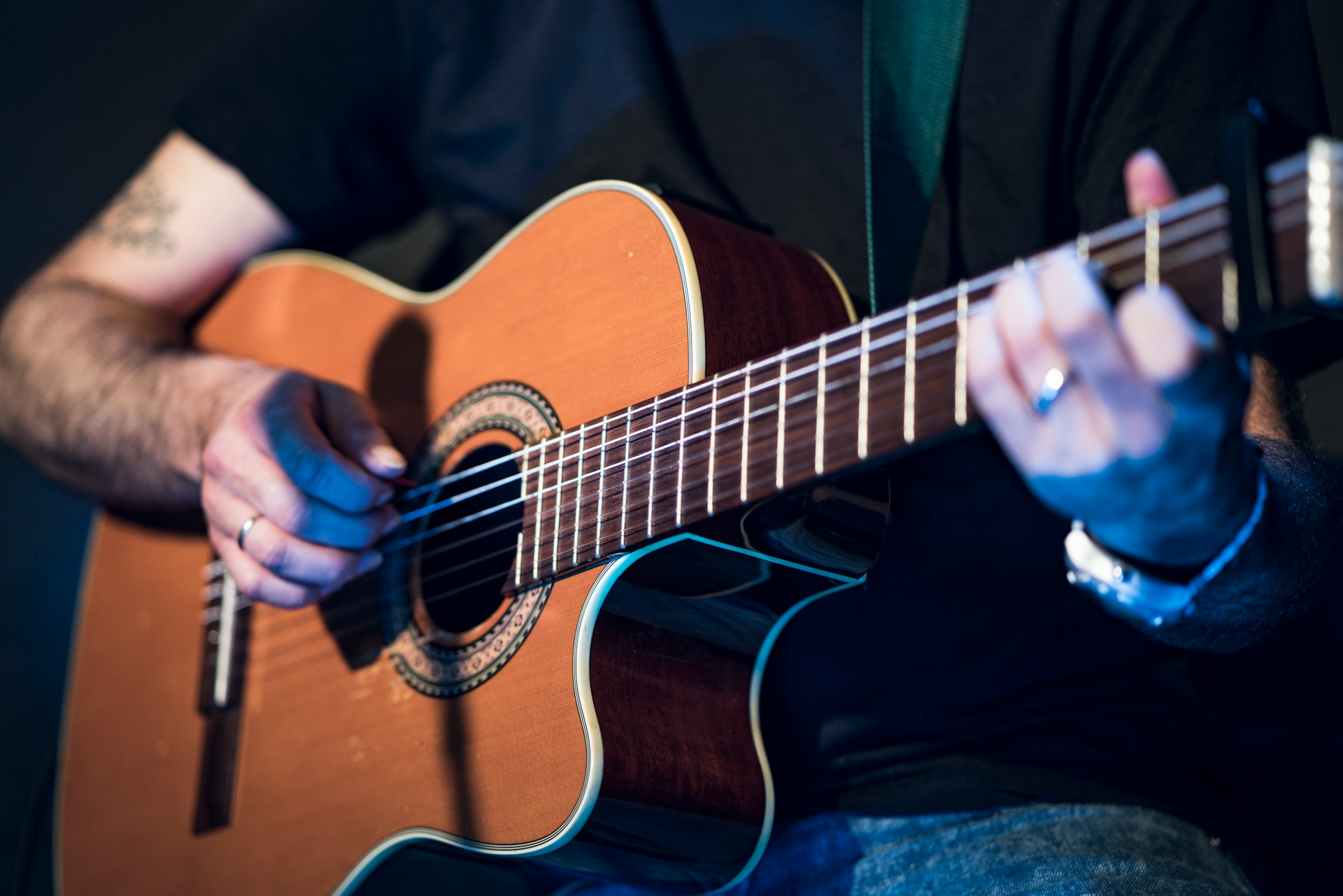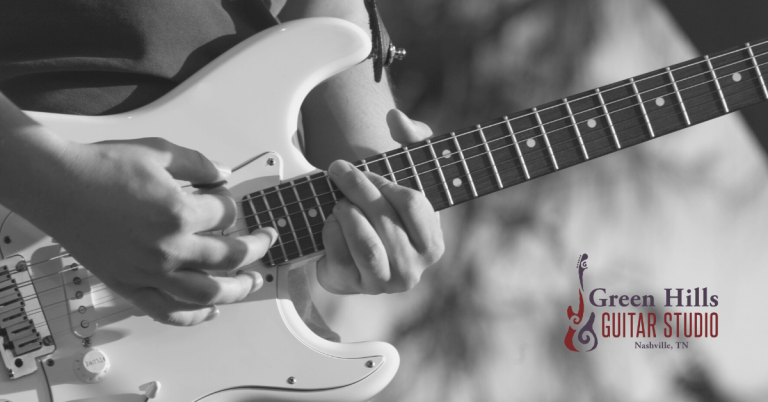Forget Strumming Patterns: Rhythm is the Key to Musicality
In the world of guitar playing, a fundamental truth often gets overshadowed by strict, strumming patterns, flashy solos, and complex chord progressions: rhythm is king.
Whether you’re strumming along to your favorite song with cowboy chords or embarking on a soulful solo, mastering rhythm is essential for every guitarist, regardless of skill level.
In this article, we’ll explore why rhythm matters more than strum patterns and how prioritizing can unlock your full musical potential.
The Limitations of Strum Patterns
When you first pick up the guitar, focusing on learning strum patterns is natural. After all, they provide a roadmap for navigating through songs and keeping time.
For example, a typical strum pattern for a beginner might be down, down, up, up, down, up (often referred to as “D-D-U-U-D-U” or counted as “1, 2, +, +, 4, +”).
However, becoming too reliant on strum patterns can lead to a robotic, mechanical style of playing that needs more soul and musicality.
Instead of feeling the music, you may find yourself simply going through the motions, confined by the constraints of predetermined patterns.
Examples of Guitar Strumming Patterns
With that said, don’t discount strumming patterns altogether. Maintaining a broader perspective that allows for musical flexibility is essential.
Here are five types of strumming patterns that beginners can practice:
- Down Strums Only: This pattern involves strumming downward on each beat. It’s a simple yet effective way to keep time and get comfortable holding and strumming the guitar.
- Down-Up Strumming: You alternate between strumming down and strumming up in this pattern. Start by strumming downward on the beat (1, 2, 3, 4) and then upward in between each beat (the “and” counts). This pattern adds more rhythm and dynamics to your playing.
- Basic Rock Strum: This pattern is commonly used in rock and pop music. It involves a consistent down-up strumming motion emphasizing beats 2 and 4. The pattern goes like this: down, down, up, up, down, up. Counting it out: 1, 2, & 3, 4, &.
- Calypso Strum: This pattern has a syncopated feel and is often used in reggae and calypso music. It involves accenting the off-beats. The pattern goes like this: down, up, down, up, down, up. Counting it out, it would be: 1, & 2, 3, & 4.
- Swing Strum: This pattern has a swing or shuffle feel commonly found in jazz and blues music. It involves emphasizing the downbeats while also adding syncopation. The pattern goes like this: down, down-up, down, down-up. Counting it out: 1, 2 & 3, 4 &.
Practice these strumming patterns slowly at first, maintaining a steady rhythm. Once you feel comfortable with them, try incorporating them into different songs and styles of music. Remember, the key to mastering rhythm is consistency and practice!
Embracing the Essence of Rhythm
Rhythm is the heartbeat of music. It’s what gives a song its pulse, its groove, its soul. With a strong sense of rhythm, even the most technically proficient guitarist can connect with their audience on a deeper level.
That’s why it’s crucial to prioritize rhythm in your practice routine. Instead of obsessing over strum patterns, focus on internalizing the rhythmic feel of the music. Tap your foot, nod your head, and let the groove guide your playing.
The Role of Feel and Timing
In addition to mastering rhythm, developing a strong sense of feel and timing is essential for becoming a well-rounded guitarist.
Feel separates a good guitarist from a great one—it’s the ability to infuse your playing with emotion and expression.
On the other hand, timing is the foundation upon which everything else is built. Without precise timing, even the most technically impressive licks will fall flat.
To improve your feel and timing, practice playing with a metronome or drum track, focusing on locking in with the groove and playing with intention.
Tips for Playing with a Metronome
The metronome is one of the most effective tools for developing a strong sense of rhythm and timing. A metronome is a device that produces a steady, consistent beat, allowing you to practice playing in time with precision.
To use a metronome, start by setting it to a comfortable tempo. Begin playing with the beat, aligning your strums or fingerpicking with each click. Focus on staying in sync with the metronome and maintaining a steady rhythm.
As you become more comfortable playing with the metronome, gradually increase the tempo to challenge yourself and improve your timing skills. Pay close attention to any fluctuations or inconsistencies in your playing, and use the metronome to help you stay on track.
Playing with a metronome may feel challenging, but it’s an invaluable tool for honing your rhythmic abilities. Incorporate regular metronome practice into your routine, and you’ll soon notice a significant improvement in your overall timing and musicality.
A Fresh Perspective on Strumming
Rather than viewing strumming as a series of predetermined patterns, consider it a dynamic, ever-evolving aspect of your playing.
Experiment with different strumming techniques, accents, and rhythms, allowing yourself to be guided by the feel of the music rather than rigid patterns. For example, try incorporating syncopated rhythms and accenting off-beats to create a more dynamic and engaging sound.
By embracing this fresh perspective on strumming, you’ll discover new ways to express yourself musically and breathe life into your playing.
The Coda
As you continue your guitar journey, remember this: rhythm is the foundation upon which all great music is built.
By prioritizing rhythm over strum patterns and embracing the essence of feel and timing, you’ll unlock a world of musical possibilities and take your playing to new heights.
So put down the strumming charts, tap into the groove, and let the music guide your hands. The journey to mastering rhythm starts now.
Guitar Lessons in Nashville, TN
Ready to take your guitar playing to the next level? Whether you’re a beginner looking to build a strong foundation or an intermediate player seeking to refine your skills, Green Hills Guitar Studio is here to help.
With two convenient locations in the heart of Nashville, TN, we offer personalized guitar lessons online and in person.
Contact us today to schedule a guitar lesson and start your journey toward becoming the guitarist you’ve always dreamed of being!






